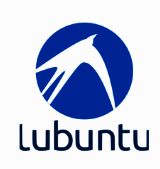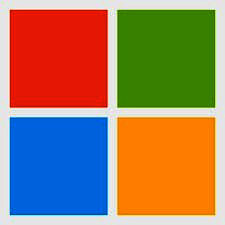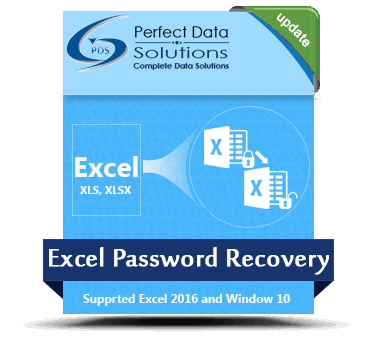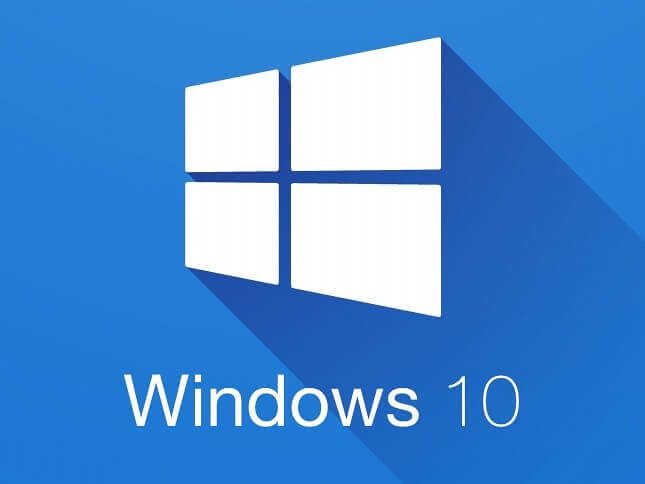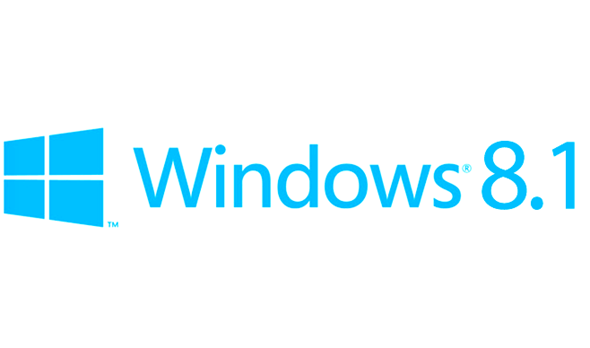What Is Operating System?
An operating system (OS) is the most important software that runs on a computer and allows it to execute numerous functions. Simply described, it serves as the interface between the hardware and the user. The operating system handles all of a computer's core activities, including resource management, application execution, and security.
A competent operating system allows the user to efficiently manage the computer's hardware and resources, provides an easy-to-use interface for interacting with the computer, and maintains system security and stability. There are various major operating systems on the market, including Windows, MacOS, and Linux. When selecting an operating system, a customer must examine its compatibility with their computer hardware as well as its usability. They should also think about the system's performance and stability, as a good operating system guarantees a seamless and hassle-free computing experience.
Furthermore, a buyer must examine the operating system's security characteristics, especially if they want to use it for sensitive data and online activities. Built-in firewalls, regular upgrades, and user account management can help safeguard the system from cyber threats. Additionally, consumers must consider the availability and compatibility of programs on the operating system. Popular operating systems, such as Windows and MacOS, have a diverse set of programs available for varied purposes, making them more adaptable.
What Are The Recent Trends In Operating System?
In the ever-changing world of technology, operating systems have become an essential element of our daily lives. From smartphones to laptops, these software systems serve as the foundation of our gadgets, ensuring a smooth and user-friendly experience. As the world becomes increasingly interconnected and digital, operating system trends have shifted dramatically.
We'll look at the latest operating system trends, allowing you to make an informed selection when purchasing your next device.
1. Mobile-First Approach: The proliferation of mobile devices has had a significant impact on operating system trends. With the bulk of the population utilizing smartphones and tablets, operating systems have changed to a mobile-first strategy. This implies that operating systems are now prioritizing the user experience on smaller screens, with features like split-screen multitasking, app optimization, and longer battery life as primary focus points. This trend is likely to persist as mobile devices continue to dominate the market.
2. Cloud Integration: As cloud computing becomes more popular, operating systems include capabilities that enable smooth integration with cloud services. This enables users to access their data and applications from numerous devices, resulting in a more flexible and convenient experience. The cloud integration trend is projected to expand as more enterprises and individuals adopt cloud technologies.
3. AI Integration: Artificial intelligence (AI) has made its way into operating systems, allowing consumers to have more personalized and smarter experiences. AI integration has resulted in capabilities like virtual assistants, predictive text, and facial recognition, which make our devices more intuitive and efficient. With advances in AI technology, this trend is projected to persist and evolve in the future.
4. Cross-Platform Compatibility: With the proliferation of different platforms, people increasingly seek operating systems that are cross-platform. This means users can transition between devices like a smartphone, laptop, and tablet without interrupting their workflow. Operating systems now support universal apps and cross-platform file sharing, making it easier for users to collaborate across devices.
5. Privacy & Security: In today's digital world, individuals are increasingly concerned about privacy and security. In response, operating systems have begun to include advanced security features including biometric verification, app permissions, and data encryption. With the rise of cyber threats, this trend is projected to continue, giving users peace of mind and protecting their personal data.
Benefits Of Using Operating System
Operating systems are crucial components of all electronic devices, including smartphones and personal computers. They serve as the foundation for all other software and apps, offering a user-friendly interface while managing the device's hardware and software resources. Choosing the appropriate operating system for your requirements can have a significant impact on your overall computer experience.
In this buyer's guide, we'll go over the benefits of using an operating system and help you make an informed decision.
1. Improved User Experience: One of the primary advantages of utilizing an operating system is the better user experience it gives. The operating system's intuitive interface and design allow users to easily explore and complete activities. It also provides customization possibilities, allowing users to tailor the appearance and settings of their device to their specific preferences.
2. Compatibility And Versatility: An operating system bridges the gap between a device's hardware and software components. It guarantees that diverse apps and software work together properly, making it easier to execute many programs at once. Furthermore, operating systems are designed to run on a variety of devices, making them versatile and adaptable to varied hardware configurations.
3. Built-In Security Features: In today's digital world, most users prioritize security. Operating systems have built-in security protections such as firewalls, anti-virus software, and data encryption to safeguard your device and data from malware and cyber attacks. Furthermore, most operating systems provide regular upgrades to strengthen security features and stay ahead of any vulnerabilities.
4. Hardware Management: Modern operating systems feature sophisticated hardware management capabilities that enable them to efficiently allocate and manage system resources. This guarantees that your device's hardware is used to its utmost ability, resulting in better performance and faster processing.
5. Support And Updates: Operating systems are constantly developing, with developers attempting to improve and add new features. This means that you can expect continuous updates and support for your preferred operating system. These updates not only improve speed and security, but also include new features and functionalities to keep your device current and relevant.
Important Factors To Consider While Purchasing Operating System?
When purchasing an operating system, various things must be considered in order to make an informed decision. As the foundation of a computer system, the operating system is important to its overall performance and usefulness.
As a result, it is critical to carefully consider these elements before making a purchase, as they can significantly affect the user's experience and happiness.
1. Compatibility: The most important element to evaluate is if the operating system is compatible with your hardware and applications. Not every operating system works with every computer and software application. To avoid compatibility concerns, be sure that the operating system you chose is entirely compatible with your hardware and software.
2. User-Friendliness: Another important consideration is an operating system's ease of use and user-friendliness. A user-friendly interface and intuitive design can significantly increase the user's experience and productivity. A complex and difficult-to-navigate interface, on the other hand, can frustrate and slow down the user's performance.
3. Security: In today's digital age, security is critical for every computer system. When purchasing an operating system, it is critical to consider security features such as built-in firewalls, antivirus protection, and automatic upgrades. A secure operating system can protect critical data while giving the user peace of mind.
4. Cost: Operating systems range widely in price, with some being open source and free and others requiring a large investment. Consider your budget and evaluate the cost against the operating system's features and functionality.
5. Support: A dependable and responsive support system is essential when it comes to operating systems. In the event of a technical problem or issue, having access to prompt and professional help can save you a lot of stress and inconvenience. As a result, before making a purchase, thoroughly examine the operating system's support options.
6. Updates And Upgrades: As technology evolves, operating systems offer updates and upgrades to increase functionality and security. It is critical to evaluate how frequently these updates are made and whether they are included in the cost of the operating system or need additional expenses.
7. Customization Options: Each user has unique wants and preferences, and being able to configure the operating system to meet those needs can significantly improve the entire experience. Consider the extent of customization available through the operating system, such as desktop themes, font styles, and layout options.
What Are The Key Features To Look For In Operating System?
When shopping for an operating system, there are several important factors to consider in order to make an informed decision.
These features have a significant impact on your user experience and your pleasure with the OS, so carefully consider each one before making a decision.
1. Compatibility: The first quality to look for in an operating system is compatibility. You want to choose an operating system that is compatible with your hardware, software, and any peripherals you may require. This assures that all of your programs and devices will work smoothly and without trouble.
2. User Interface: The user interface, or UI, refers to the visual design and layout of an operating system. It impacts how easy it is to navigate and utilize the operating system, so it's critical to select one that meets your preferences and requirements. Some operating systems feature a simple and minimalist user interface, while others are more complicated and customisable.
3. Security: Security is a primary priority for any operating system. Look for an operating system that includes strong built-in security features like firewalls, anti-virus software, and regular updates. This will assist to protect your data and prevent unauthorised access to your system.
4. Performance: The performance of an operating system is an important factor to consider. It considers boot-up time, multitasking capability, and system responsiveness. Choose an operating system that can efficiently handle your job and works smoothly, with no lags or crashes.
5. Device Management: If you have many devices, such as a smartphone, tablet, and laptop, look for an operating system that allows you to manage them all seamlessly. This enables you to effortlessly sync and access your files and settings across all of your devices, streamlining your workflow and increasing efficiency.
6. Software Availability: Another key issue to consider is the availability of software for your preferred operating system. Some operating systems support a wider range of software and applications, whilst others do not. It is best to select an operating system that has the software required for your unique needs.
7. Customization Options: If you like to tweak and personalize your operating system, seek for one that provides a variety of customization possibilities. This includes themes, backdrops, typefaces, and other elements. The ability to customize your operating system can considerably improve your overall experience.
Why Do Businesses Need Operating System?
In the digital age, businesses rely significantly on technology to function and remain competitive. An operating system, which serves as the foundation of any computer system, is critical for businesses to run their operations. An operating system (OS) provides a platform for other programs and software to run on. It serves as an interface between the hardware and software, allowing them to communicate and collaborate seamlessly.
One of the primary reasons businesses want an operating system is for effective resource management. An operating system allows businesses to properly allocate hardware resources such as memory, computing power, and storage to various applications. This helps to improve their performance and prevent system problems. Another important aspect of an operating system for enterprises is its security features.
OSs include built-in security features to protect important company data from external attacks. These include firewalls, antivirus software, and encryption solutions, which ensure the security and confidentiality of important company information. Furthermore, an operating system provides various productivity tools that help firms streamline their processes.
These include file management systems, scheduling tools, and collaboration platforms that let team members communicate and work together more effectively. Operating systems play an important role in data management and organization. Businesses may simply retrieve and manage their data using capabilities such as file indexing and access control, resulting in better decision-making.
Furthermore, OSs provide frequent upgrades and maintenance, ensuring that the system functions smoothly and is up to date with the latest innovations. Investing in a dependable operating system can help firms save time and money. They may avoid costly downtime and reduce the risk of data breaches or cyber attacks by implementing a reliable and secure system. Furthermore, an OS with user-friendly interfaces and features can boost employee efficiency and production, resulting in higher revenues.
How Much Time Is Required To Implement Operating System?
The time required to implement an operating system varies based on a number of factors, including the type of system, the complexity of the installation process, and the experience of the installer. Installing and configuring an operating system can take anywhere from a few hours to many days. A simple and straightforward installation, such as a single desktop system, may usually be accomplished in a few hours.
This covers the time required to download the software, make bootable media, and complete the installation. More complicated systems, such as a network of servers or custom-built systems, may require several days or even weeks to finish. Furthermore, the installer's experience and understanding might have a major impact on the time necessary.
A seasoned IT specialist with experience installing operating systems may complete the job much faster than someone who is unfamiliar with it. Furthermore, some operating systems may require additional adjustments and customizations, which might increase the entire installation time. It is also critical to consider any potential technical challenges that may develop during the installation process, which can increase the time required to adopt an operating system.
What Is The Level Of Customization Available In Operating System?
When selecting an Operating System (OS) for your device, one of the most important considerations is the level of customisation available. Customization refers to the ability to personalize and adjust many components of the operating system to meet your specific preferences and needs. In this tutorial, we will look at the various levels of customisation available in operating systems so you can make an informed selection. To begin, it is critical to realize that operating systems are primarily divided into two types: closed-source and open-source. Closed-source operating systems (OS), such as Windows and macOS, are proprietary systems designed by a single vendor with restricted customization choices. Open-source operating systems, such as Linux, enable users to view and edit the source code, allowing for extensive customisation. The level of customisation might vary substantially between these two types.
Let us take a deeper look at some of the important areas that can be changed in an operating system.
1. User Interface: The user interface (UI) is the visual portion of an operating system that contributes significantly to the user experience. Most operating systems allow you to customize the UI by changing the background, color scheme, and text size. However, the extent of customisation differs per OS. Linux, for example, allows for greater UI customization than Windows or macOS, which have fewer alternatives.
2. System Settings: System settings are the numerous options and configurations that influence the behavior of your device and the operating system. In this regard, Linux stands out since it provides a great level of customisation via advanced system options. Users can customize many system settings, including network configuration, power management, privacy, and security.
3. Default Applications: These are the built-in programs that your device utilizes to complete specific tasks, such as online browsing and email. Most operating systems allow users to configure their preferred default apps, however others, such as macOS, have limitations. Linux, on the other hand, gives users complete control, allowing them to select and configure their default apps based on their needs.
4. File Management: File management enables users to organize and manage their files and folders. This aspect's level of customisation is determined by the operating system and the file manager used. For example, macOS has a limited file manager, whereas Linux provides a number of file managers with varying levels of customization, including programmable keyboard shortcuts and visual themes.
Which Industries Can Benefit The Most From Operating System?
An operating system (OS) is a critical software component responsible for managing a computer's hardware and software resources. It serves as a communication link between the computer's hardware, software, and user. In today's digital landscape, operating systems are essential for practically every business. Because of their multiple advantages, operating systems have become unavoidable for small and large businesses alike.
Some of the important industries that can gain the most from operating systems include:
1. Information Technology (IT) Industry: The information technology (IT) industry is significantly reliant on operating systems for day-to-day operations. IT workers can use operating systems to properly manage their computer networks and servers, guaranteeing smooth communication and data movement throughout the firm. Furthermore, current operating systems' extensive capabilities and security procedures make them perfect for managing large amounts of data and applications in the IT industry.
2. Healthcare Industry: Electronic medical records and digital imaging are now widely used. Operating systems are critical for safely managing and storing such large amounts of data. They not only safeguard the confidentiality of sensitive patient data, but also allow for seamless integration with a wide range of medical devices and equipment, making healthcare professionals' jobs more easier and more efficient.
3. Education Industry: In today's digital age, technology has become an essential component of the educational system. Operating systems have become a crucial tool for students and teachers in schools ranging from elementary to university level. Operating systems enable educators to construct dynamic learning environments, access web resources, and efficiently manage their instructional materials. Students, on the other hand, can use the operating system's features to better organize their study materials and learning experiences.
4. Banking And Finance Industry: As digital transactions become more prevalent, the banking and finance sector relies heavily on operating systems for day-to-day operations. Operating systems offer a safe platform for handling financial records and transactions, protecting the security and integrity of sensitive financial information. Modern operating systems' real-time processing capabilities also help to provide clients with rapid and efficient services.
5. Manufacturing Industry: Operating systems are used by the industrial industry to manage and monitor sophisticated machinery and equipment. They contribute to process optimization, downtime reduction, and increased overall productivity. The real-time monitoring and data analysis capabilities of operating systems let manufacturers identify possible faults and take proactive measures to avert system failures.
Overall, operating systems have become critical components in almost every business, allowing for efficient and secure control of processes, data, and resources. Carefully picking the right operating system for your sector can provide considerable benefits to your organization, including higher productivity, simpler workflows, and improved performance.
Conclusion
Finally, selecting the best operating system for your needs is a critical decision. Factors to consider include hardware compatibility, user interface, security features, and overall performance. The most common choices are Windows, macOS, and Linux, while alternative options include Chrome OS and mobile operating systems. Before making a purchase, spend time researching and comparing the features and capabilities of various operating systems.
Consider your budget, workload, and preferences before making a decision. It is also advisable to read reviews and get advice from IT experts or experienced users. Remember that the operating system you choose will significantly affect your daily computing experience and productivity. As a result, choose wisely and invest in a dependable and user-friendly system that will suit your current and future requirements. With the correct operating system, you can increase your productivity while also enjoying a seamless and secure computing experience.


-logo.jpg)

